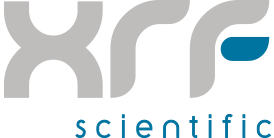Portable vs. Lab-Based Analysis: Finding an Efficient Critical Minerals Strategy
Securing supplies of critical minerals is one of the biggest challenges facing modern industry. As demand for the critical minerals lithium, cobalt, and rare earth elements grows, so does the need for accurate, efficient analysis. A mineral deposit is only valuable if it can be extracted, processed, and refined effectively. Without the right data, companies risk wasted resources, supply chain disruptions, and costly inefficiencies.
To meet these challenges, industries must integrate both portable and lab-based analysis into their workflows. Portable analysis tools provide real-time, on-site insights, allowing teams to make quick decisions during exploration and mining. Lab-based analysis methods ensure the precision needed for refining, compliance, and quality control. Using these techniques together strengthens the critical mineral supply chain, improves efficiency, and enhances long-term resource planning.
Navigating the Complexities of the Supply Chain for Critical Minerals
The challenge isn’t just finding mineral deposits. It’s ensuring they can be extracted and processed efficiently. Many critical minerals, such as cobalt from the Democratic Republic of the Congo and rare earth elements from China, are sourced from politically sensitive regions. Supply chain disruptions, price volatility, and trade restrictions make reliable mineral verification a necessity rather than an option.
For companies operating in this space, inaccurate assessments can lead to costly mistakes, whether through inefficient refining, investment in low-grade resources, or failure to meet regulatory standards. A well-integrated approach to mineral analysis ensures quality, efficiency, and compliance at every stage of the supply chain.
Portable Analysis vs. Lab-Based Analysis: Which One Matters More?
Discovering a valuable deposit is only the first step. A successful critical minerals strategy requires deeper insights into composition, purity, and processing potential to maximize resource efficiency.
Portable Analysis: Speed, Flexibility, and On-Site Decision-Making
In remote locations, waiting for lab results isn’t always an option. Portable analyzers provide real-time data, allowing teams to make rapid decisions without costly delays.
Key Portable Analysis Technologies
- X-ray Fluorescence (XRF) Spectrometers: Identifies elements, like nickel, cobalt, and rare earth elements, improving efficiency in field assessments.
- Laser-Induced Breakdown Spectroscopy (LIBS): Detects light elements that are difficult to analyze with XRF.
- Near-Infrared (NIR) and Raman Spectroscopy: Helps map ore distribution and assess mineral structure in real time.
With portable analysis, exploration teams can screen ore deposits, map high-value materials, and reduce operational waste. However, the capabilities of portable analysis are limited when regulatory compliance, trace element detection, or purity validation is required.
Lab-Based Analysis: Precision for Processing and Compliance
Although portable analysis tools excel in speed, lab-based analysis delivers unmatched accuracy, ensuring that extracted critical minerals meet industry standards. These high-precision techniques help optimize refining processes, detect trace elements, and establish regulatory compliance.
Key Lab-Based Analysis Technologies
- Inductively Coupled Plasma Mass Spectrometry (ICP-MS): Identifies trace elements at ultra-low concentrations, crucial for verifying mineral purity.
- X-ray Diffraction (XRD): Determines crystalline structures, providing insights into ore processing methods.
- Scanning Electron Microscopy (SEM-EDS): Offers high-resolution imaging and detailed chemical composition analysis, crucial for refining efficiency.
Lab testing ensures that critical minerals are processed correctly and meet industry regulations, reducing inefficiencies and improving product quality.
Integrating Portable Analysis and Lab-Based Analysis for a Stronger Supply Chain
A well-rounded critical minerals supply strategy balances the agility of portable analysis with the precision of lab-based testing. Each plays a vital role in ensuring efficiency, compliance, and resource optimization.
- Exploration & Resource Identification: Portable analyzers, such as XRF and LIBS, allow field teams to quickly assess deposits, ensuring time and resources are focused on viable sites. To validate these findings, lab-based techniques like ICP-MS and XRD confirm the economic potential by analyzing mineral composition with greater accuracy.
- Mining & Processing Optimization: Real-time monitoring with portable XRF analyzers ensures only high-quality ore is extracted, reducing waste. Lab-based SEM-EDS analysis further refines processing methods by providing detailed insights into mineral structures. This improves efficiency and maximizes yield.
- Quality Control & Compliance: On-site portable spectrometers help verify material authenticity, preventing contamination or fraud. Lab-based trace element testing ensures compliance with strict industry regulations, particularly in sectors like aerospace and battery manufacturing.
- Environmental & Sustainability Monitoring: Portable XRF tools allow for the immediate detection of hazardous elements at mining sites, enabling quick intervention. Meanwhile, lab-based chemical analysis provides long-term environmental impact assessments. This type of lab-based analysis can help companies align with sustainability goals.
By integrating both portable analysis and lab-based analysis, companies can maintain efficiency, accuracy, and compliance, while strengthening their position in an increasingly competitive global market.
Enhancing Mineral Analysis with XRF Scientific
Accurate mineral assessment requires high-quality sample preparation, and XRF Scientific provides industry-leading solutions to improve lab-based precision and efficiency.
Our fusion machines, available in electric and gas configurations, prepare high-purity samples for XRF, and ICP-MS analysis, ensuring consistent, reproducible results. Additionally, our ultra-high purity lithium borate fluxes enable precise sample fusion, while our platinum labware is designed for high-temperature applications, improving the accuracy of analytical processes.
With XRF Scientific’s cutting-edge sample preparation tools, companies can achieve greater precision, efficiency, and sustainability, delivering a stronger, more resilient critical minerals strategy in today’s evolving market.









